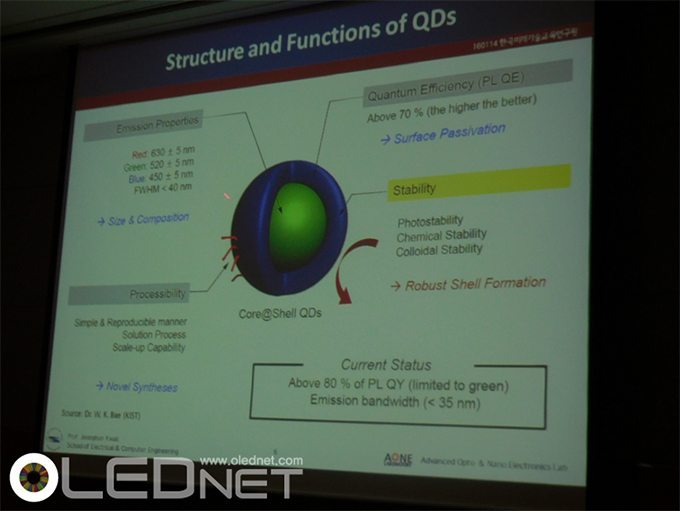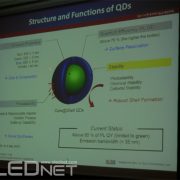Quantum Dot, Will it Rise to Become the Answer for Future Display Materials?
The interest in quantum dot materials is increasing daily. In July 2015, Professor Changhee Lee of Seoul National University received Science Technology Person of the Month prize with technology that greatly improves QLED performance and lifetime. In CES 2016, with cadmium-less quantum dot applied SUHD TV, Samsung Electronics achieved UHD TV’s color standard BT.2020 and received much attention.
Regarding this interest, during the Pioneer Technology Seminar to Overcome Display Industry Crisis (January 14) held in South Korea, University of Seoul’s Professor Jeong Hoon Kwak reported that quantum dot technology is a material with plenty of potential from the long-term perspective.
Quantum dot materials can be used with blue LED to improve LCD color gamut. Two techniques are generally used; the edge type has quantum dot placed on the sides and for surface type the quantum dot film is attached in front of BLU. Most of TV makers, excluding Sony, are using surface type. Professor Kwak explained that quantum dot can achieve desired color by adjusting the size of the particles without changing the materials. Through this, he estimated that it could replace color filter.
As well as increasing the LCD color gamut, as quantum dot materials emit light when connected to electricity, much like organic light emitting materials, it is anticipated that they could be used to replace the emitting materials in OLED panel. Within the industry, this technology is called QLED or QD-LED (Quantum Dot Light Emitting Diode) technology. Professor Kwak emphasized that QLED has better color gamut than OLED and has a merit of good actualization of deep blue. As QLED is basically formed through solution process, he added that solution process pixel patterning technology has to be development and device lifetime also has to increase.
Professor Kwak explained that as there are not many places mass producing QLED materials at present, the cost is high. However, he emphasized that because the quantum dot materials have an advantage of being easy to synthesize, from long term perspective, they can be used at lower price than OLED.





Leave a Reply
Want to join the discussion?Feel free to contribute!